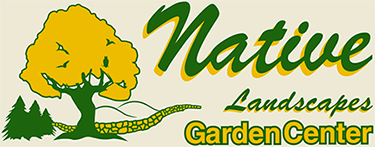Spring time brings longer sunny days, warmer weather, bursting leaf buds and quaint spring ephemerals. Tree sap begins to thaw and moves up majestic maple trunks with new invited nutrients. Leaf buds and early spring flower buds burst open, welcoming pollinators to a drop or two of nectar and a dusting of pollen.
Bees fly back and forth to their hive during their long busy day treks to share nectar with the “house bees”. The “house bees” ingest the nectar and hold it in their “honey stomachs.” The house bees have two stomachs, one for ingesting honey for nutrients and one for the storage of nectar. After storing the nectar, the house bee adds enzymes to the nectar and drops it into a hexagon shaped cell within the hive. Before they drop it in the cell, the nectar stays in a droplet outside the bees mouth and evaporates for up to twenty minutes. The process is repeated until the whole cell is filled up. The house bees will fan the nectar using their wings to promote more evaporation. Once the moisture content of the nectar drops to about 20%, the house bee caps it with a layer of wax for protection. Here, the honey is stored for the colony as food for larvae and potential new queens. The honey is an important beneficial carbohydrate for adult honey bees, especially, the worker bees, who are busy collecting nectar all day.
Nectar and honey are not the only food source for a bee colony. They also rely on pollen as a source of protein, lipids, vitamins and minerals. When the worker bees head out for the day, they come back with pollen in their “pollen basket” located on their back legs. When they bring the pollen back to the hive, the bees moisten the pollen with nectar to make “bee bread”. “Bee bread” is an important protein source, especially for developing bees. Not only is pollen important to bees it is important to ensuring future seed development within flowers known as pollination.
One bee can visit up to 5,000 flowers in one day and can make an average of 20 – 25 trips to its hive! However, if the weather does not cooperate this spring and we get high amounts of precipitation, there is the possibility of the bees starving due to a low ration of honey within the hive after the long winter. Bees are able to sense air pressure. When the air pressure drops they know it is going to rain and they begin their journey back to the hive. During a good season one large bee hive can produce up to 20 – 30 pounds of honey.
In honor of how much pollinators and bees do for us to produce delicious honey, I think it is important to change our mindset and for now, think about our lawns. What is our lawns ecological significance? Does it help the bees? This spring lets think about converting some of our lawn into a garden that can act as a nectar source for important pollinators and bees. When thinking about plants for your nectar garden, think natives! I cannot stress enough how important native plants are. They have so much more to offer our wildlife and insects than our lawn or “green desert” as Kim Eierman founder of Ecobeneficial likes to put it. (www.ecobeneficial.com) It is important to know that some non-native plants do not produce nectar for nectar feeding insects and birds. Do some light research and you are bound to find wonderful native nectar plants. A few of my suggestions are Clethra alnifolia, this shrub produces many fragrant racemes of white flowers and the bees absolutely love this plant. After it flowers, birds will feed on the seed heads in the fall. Asclepius tuberosa, a bright orange flowered perennial that is also a host for the monarch butterfly and the grey hairstreak butterfly. This plant has a significant amount of nectar for pollinators it is a great addition to any garden. Joe Pye Weed or Eupatorium maculatum is a tall, upright perennial with big pink billowy flowers. Joe Pye provides sweet nectar and pollen to the hard working bees in August. All of these plants and more you can find at Native Landscapes in our Garden Center. We will be opening April 1st and Pete and I will be happy to answer any questions about native plants.
Happy Spring!
Cassandra Kessman
www.nativelandscaping.net
